obsidian_supercharged_links
 obsidian_supercharged_links copied to clipboard
obsidian_supercharged_links copied to clipboard
obsidian plugin to add attributes and context menu options to internal links
Supercharged Links
This plugin allows you to style the links in your Obsidian vault based on your notes metadata! You can, for example, automatically add colors and emojis to the links:
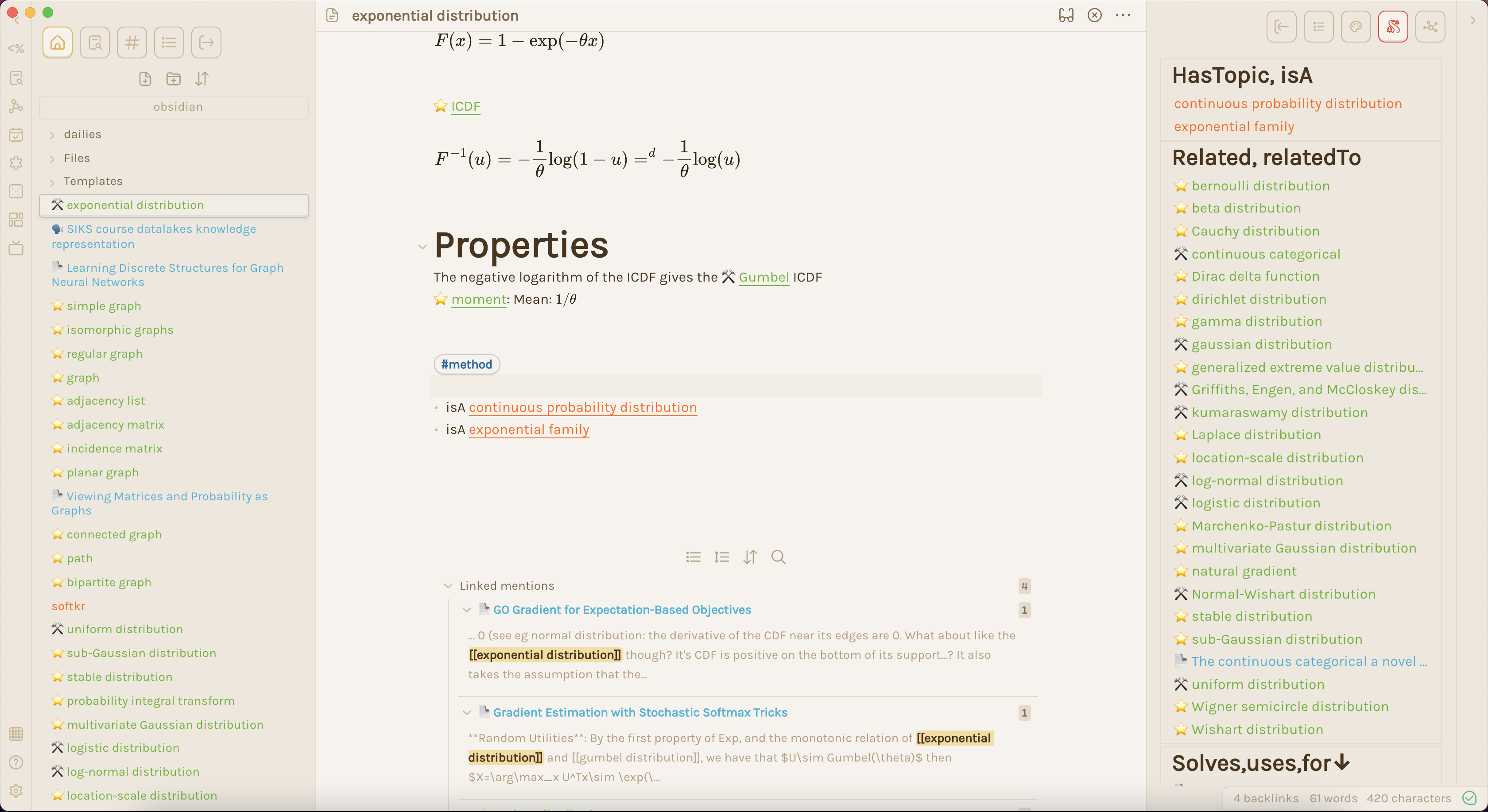
Why is this useful?
For example, when your notes represent something, like a paper, a location, a person or a day in the week. Then you can use Supercharged links to have those notes stand out. Another use case might be to give notes with the #todo tag a loud color.
This visual feedback helps you find the right note back quickly!
Setting Supercharged Links up is easier than ever now with the Style Settings Plugin! See down below for a tutorial to get started.
Getting started
Let's say I have a note about Jim called Jim.md with the tag #person and some YAML frontmatter.
---
status: call soon
age: 42
---
Jim is one of my colleagues
#person
I want to change what links to Jim's note look like. In particular, I want links to persons to have a blue background, and I want persons I have to call to have a telephone emoji ☎️ in front:  .
.
Setting up the plugin
Time to set up the plugin to get this work! Let's go to the plugin settings.
First, you have to tell the plugin what front-matter attributes to include for your styling in the Target Attributes for Styling option on top. Let's add status here, which indicates whether we need to call Jim!

Next, we have to tell the plugin to look for notes with the tag #person. In the settings, under the Styling header, create a new selector. Under types of selector, select "Tag", and add person down below:
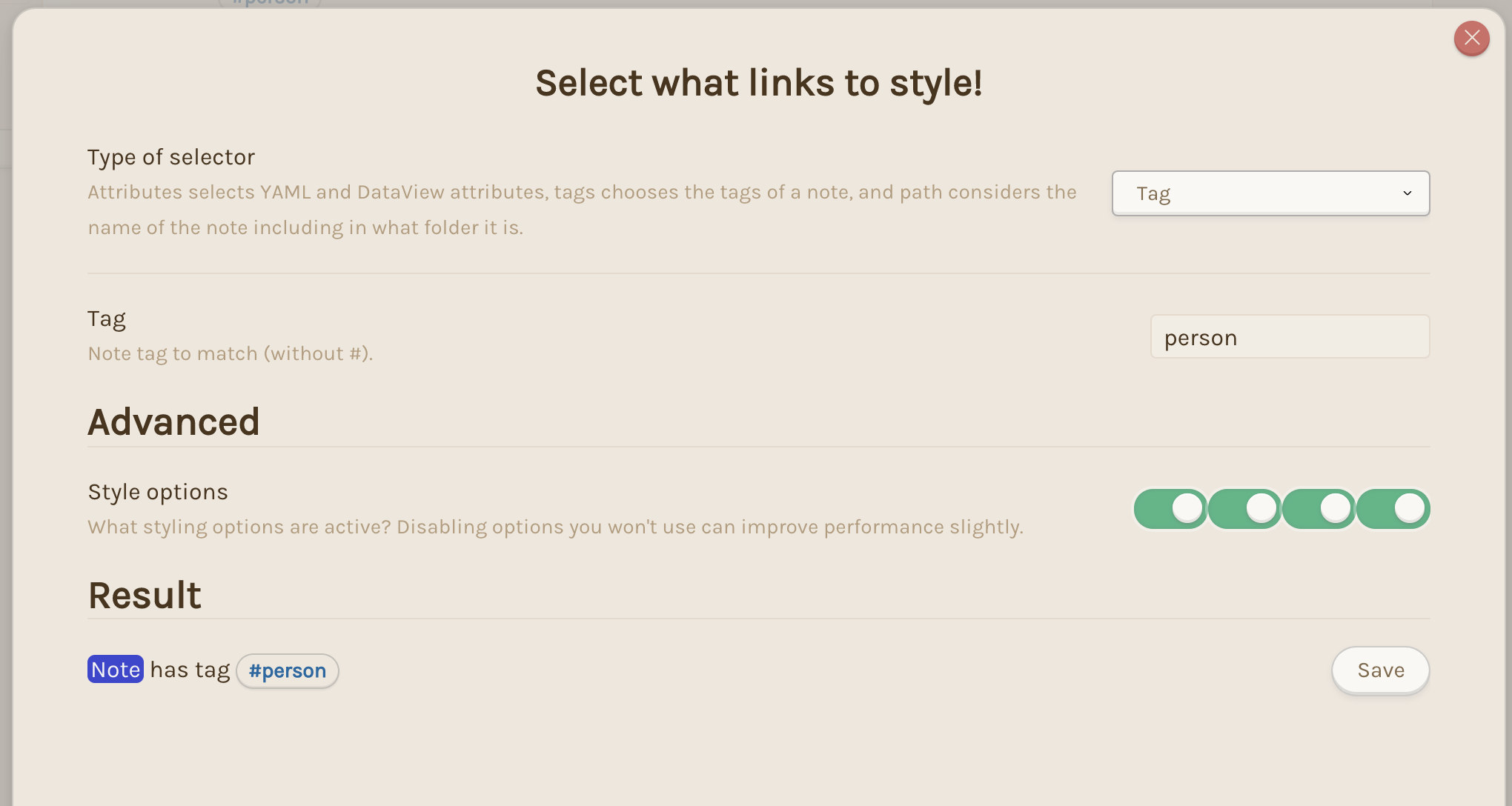
We also want to add an emoji when notes have call soon as its status. We will tell the plugin to look for the attribute status, and that its value should be call soon. Note that this will also look for inline fields called status from DataView.
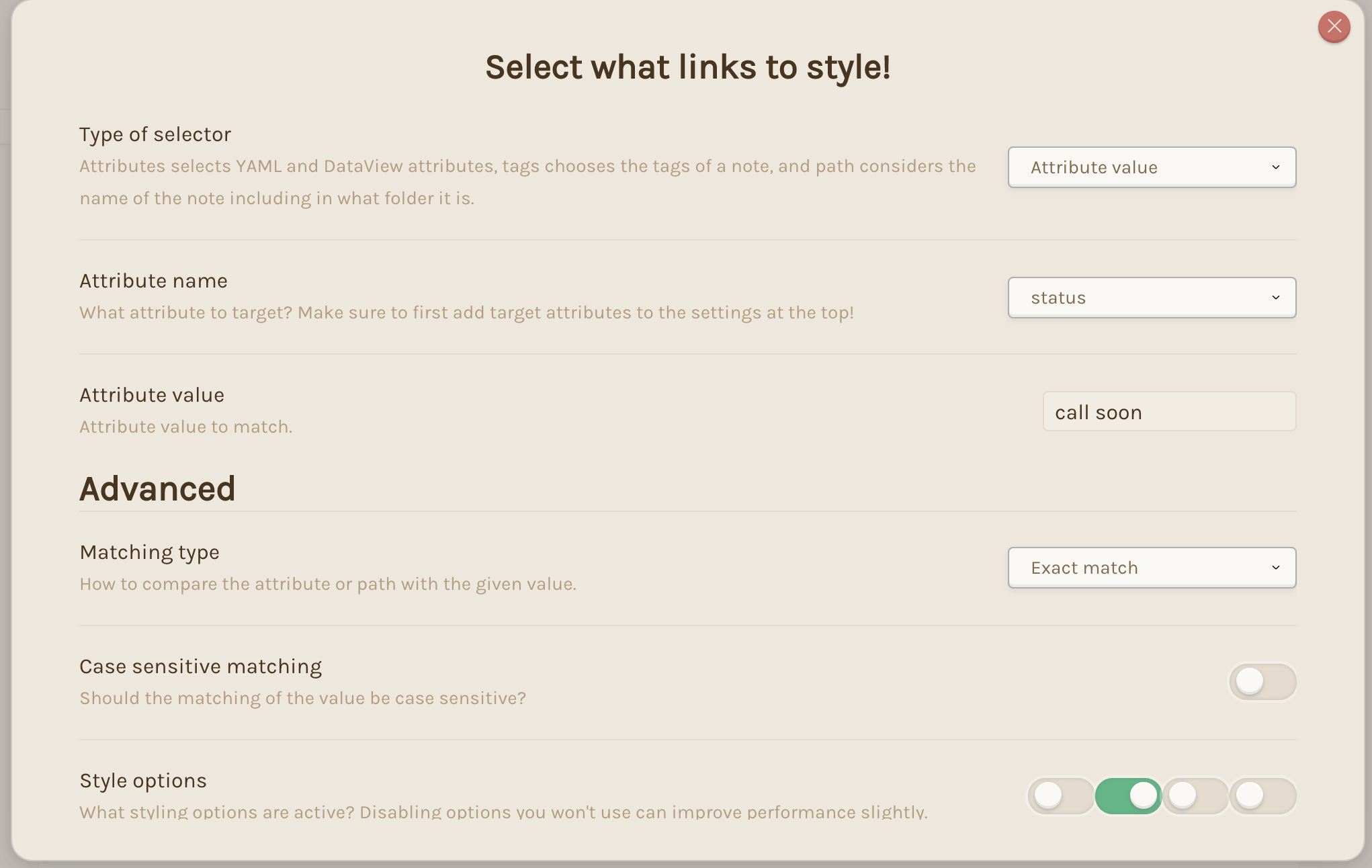
One important setting for our use case is that we only enable the "Add content before link" option under "Style options", since otherwise this style would override the one from the tag #person!
In addition to styling based on attributes or tags, we can also style notes based on their 'path' (which includes its name, folders and extension). For example, we can style all notes in the folder dailies. Make sure to select 'Contains value' under match here instead of 'Exact match':
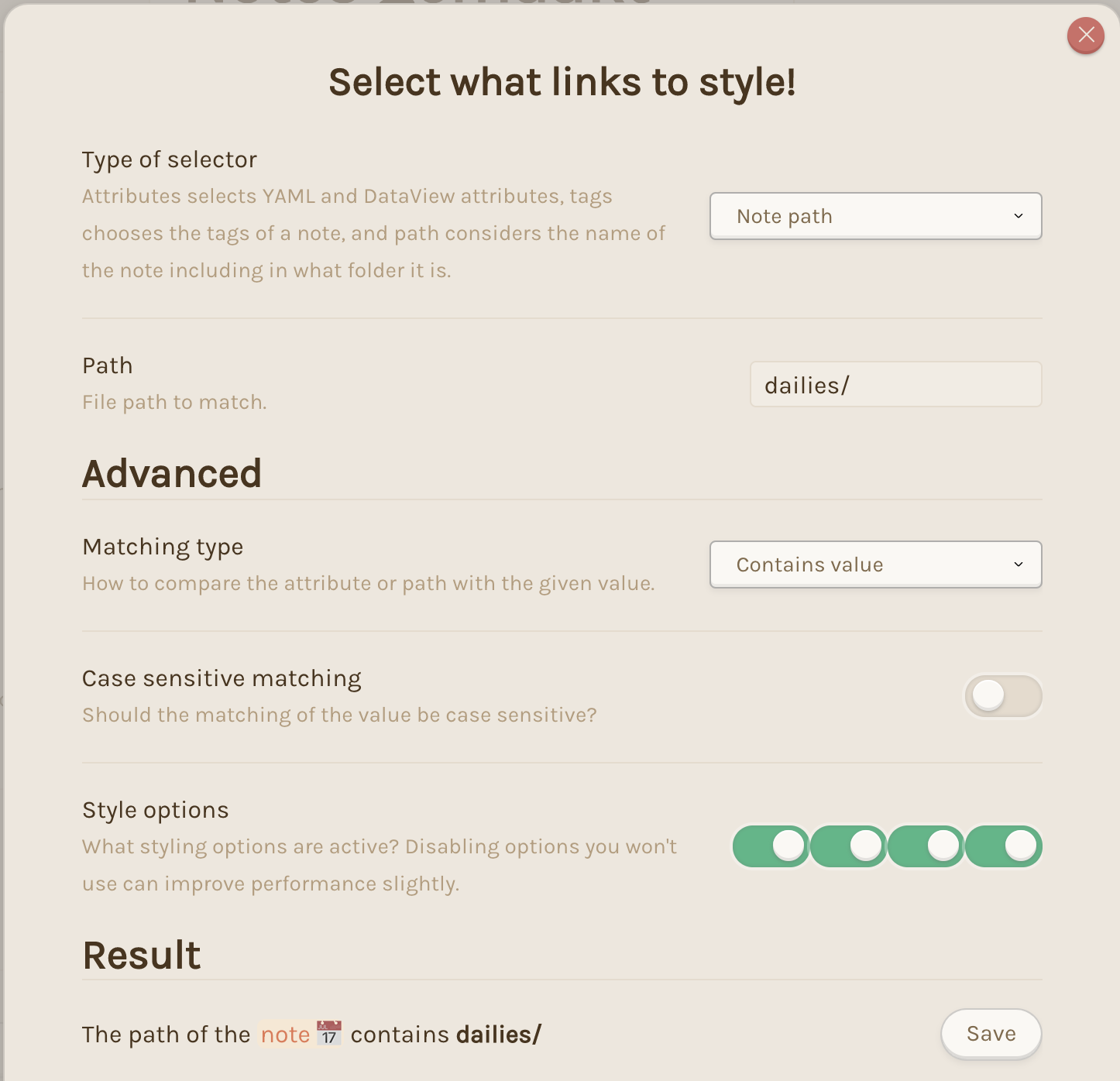
Time to style!
First, make sure you have the Style Settings Plugin installed and enabled. Then, under settings, navigate to the settings of Style Settings. Now we are ready to style our links! Let's start with setting up our style for notes with the tag #person. We will use a white text color, enable the background, and use a nice blue background there.
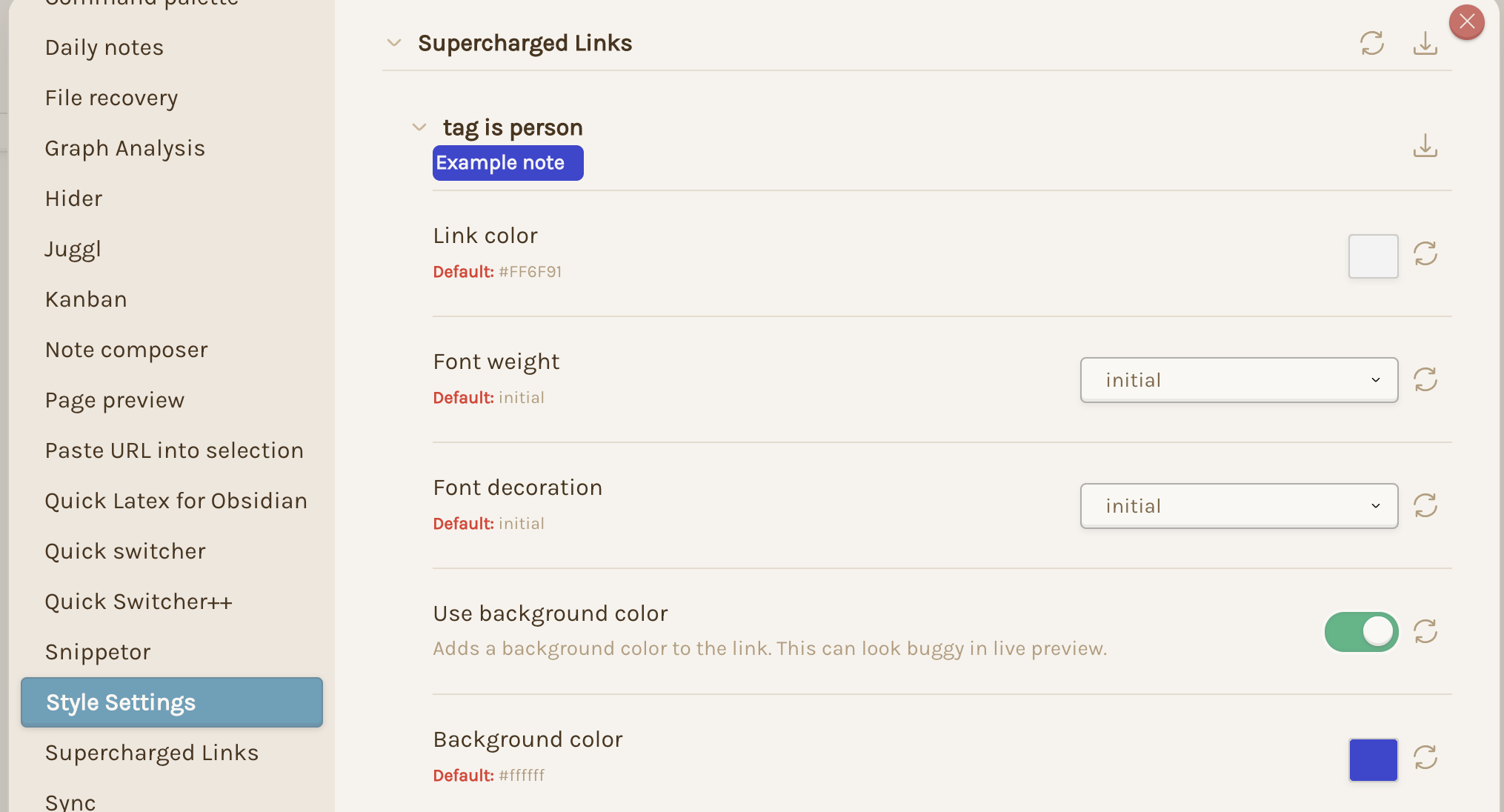
Next, let's add emoji's before notes with the call soon status. All we have to do here is copy the ☎️ into the text area "Prepend text".

And voila!

Advanced use
While the Style Settings integration provides a huge amount of customizability options, if you are comfortable with CSS and HTML, you can go even further with styling your links. For that, let's explain what this plugin does in the background.
Let's say I have some link to [[Jim]] somewhere.
Without the plugin activated, the HTML link element would normally look like this:
<a data-href="Jim" href="Jim" class="internal-link" target="_blank" rel="noopener">Jim</a>
This does not give any information about what is in the Jim.md note! So, we wouldn't be able to customize it.
That's where this plugin comes in: it will add two extra properties in the <a> element : data-link-status and data-link-tags. Importantly, these attributes are prefixed with data-link so that it will not conflict with other attributes in Obsidian.
With the plugin active, the <a>element will be supercharged like this:
<a data-href="Jim" href="Jim" class="internal-link data-link-text data-link-icon data-link-icon-after" target="_blank" rel="noopener" data-link-status="call soon" data-link-tags="#person" >Jim</a>
Style your links with CSS!
You can use the flexibility of CSS to customize your links by setting CSS properties in a CSS snippet like links.css. To create a CSS snippet, go to the Obsidian settings, then to Appearance and scroll to the CSS snippets section. Click on the little folder icon, then create a new file in the opened folder called links.css.
Example CSS snippets
To change the color of every appearance of a link to a note based on the tag in the file:
[data-link-tags*="#topic" i]{
color: #ff6600 !important;
}
This will target all HTML elements that contain the data-link-tags property, that is, all supercharged links.
To put a 👤 emoji before the name of each link to a "category: people" note:
.data-link-icon[data-link-category$="People" i]::before{
content: "👤 "
}

Selecting specifically .data-link-icon is required to prevent bugs in Live Preview.
To highlight the link in a tag-like blue rounded rectangle when the property status is in the note:
:not(:empty)[data-link-next-status] {
color: white;
background-color: rgb(29, 29, 129);
border-radius: 18px;
padding: 5px 15px;
}

To display the value of the status property at the target file, but only whenever you hover on the link:
.data-link-icon-after[data-link-status]:hover::after{
content: " ► "attr(data-link-status)
}
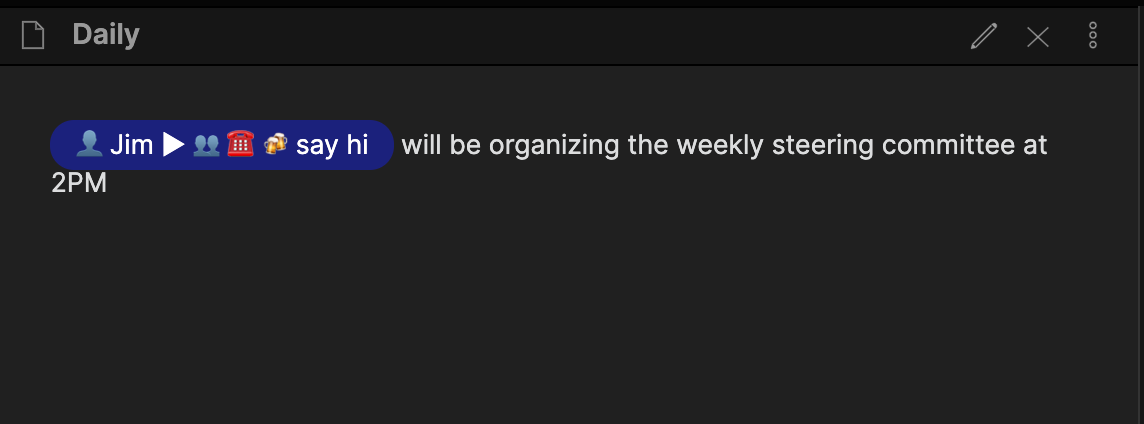
To hide the display of links with the tag #hide from your notes (that is, from preview mode and live preview):
a.internal-link[data-link-tags *="hide"],
.cm-hmd-internal-link > [data-link-tags *="hide"]{
visibility: hidden !important;
display: none;
}
Demos
NOTE: These demos are somewhat outdated.
Live Preview

Internal link simple styling
https://youtu.be/tyEdsmAQb_4
Multiple properties
https://youtu.be/Ofm6gIRP-7o
Multiple values for a property
https://youtu.be/aaSZnkEuH4w
Supported plugins
Live preview, source view, reading mode and the file browser are fully supported in core Obsidian. Other plugins are also supported, as listed below:
Core plugins:
- Backlinks (including Backlinks in edit mode)
- Outgoing links
- Search
- Starred files
- Quick Switcher
Community plugins:
- Breadcrumbs
- Graph Analysis
- Recent files
- Quicker Switcher++
- Another Quick Switcher
- Dataview (inline fields)
- Omnisearch
Want support for another plugin? Create an issue here in the repo!
Link context menu extra options
This plugin also adds context menu items to modifiy target note's frontmatter properties and "inline fields" (dataview syntax) by right-clicking on the link.
This functionality is deprecated and has been migrated to metadata-menu plugin, available with brat https://github.com/mdelobelle/metadatamenu .